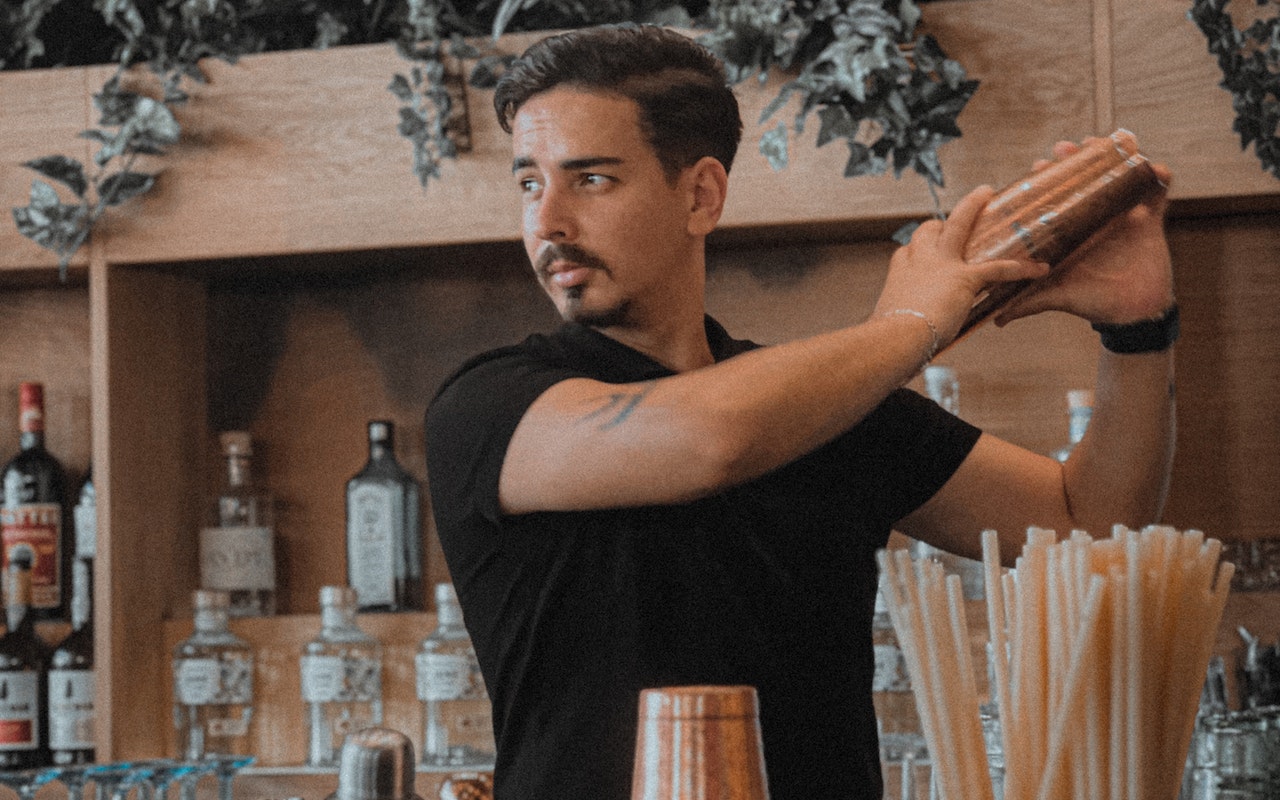Setting foot into the world of mixology for the first time can be both exciting and intimidating. The art of creating memorable cocktails is as complex as it is fascinating. Among the various techniques used in this craft, shaking stands out as a cornerstone. Shaking isn’t merely a flashy move to entertain customers – it’s a technique that elevates the quality of the drink, enhances flavors, and provides an unforgettable experience.
The purpose of this blog post is to introduce you to the world of bartender shaking techniques, from understanding the rationale behind shaking to mastering the basic shaking styles and ensuring proper maintenance and safety.
The Magic Behind the Shake
Shaking, as simple as it may seem, plays a significant role in mixology. Not only does it blend ingredients together, but it also modifies the texture and flavor of the drink. Consider shaking as the magic wand that turns a mixture of different elements into a harmonious cocktail, delivering a delightfully smooth and frothy texture.
Meanwhile, it brings out the hidden flavors of the ingredients, offering an enhanced sensory experience to the drinker. The purpose of shaking extends beyond mere aesthetics – it has a profound impact on the overall quality of the drink.
Selecting Your Mixology Toolkit
When it comes to the practicalities of mixing drinks, the type of shaker you select plays a crucial role. It’s essential to understand the various options available and their unique features. The choice ultimately depends on personal preference and the specific requirements of your mixology endeavors. Here are some popular types of shakers to consider:
- Boston Shaker Set: This classic shaker is an excellent choice for beginners entering the world of mixology. It consists of two pieces—a metal tin and a mixing glass. The Boston shaker is highly versatile and easy to use, making it a favorite among professional bartenders.
- Cobbler Shaker: If simplicity and convenience are your priorities, the Cobbler shaker might be the ideal option for you. This type typically features a metal tin, a built-in strainer, and a cap that doubles as a measuring cup. It offers a compact and all-in-one solution for mixing and straining your cocktails.
- French Shaker: For those seeking a touch of elegance, the French shaker is often considered the gold standard. It consists of two metal tins that fit snugly together. The French shaker, also known as the gold bar shaker, is not only looks luxurious but also provides a reliable and efficient way to mix your drinks.
It’s important to note that there isn’t a single shaker that can be universally hailed as the best. Each type has its own strengths and weaknesses, so it’s crucial to consider your preferences, mixing style, and the specific requirements of the cocktails you’ll be preparing. By choosing the right shaker, you can enhance your mixology skills and create delicious drinks with ease.
The Shake That Makes the Cocktail
Once you’ve chosen your ideal bartender shaker, it’s time to learn some basic shaking techniques. Three styles of shaking are widely used in mixology: the Hard Shake, the Whip Shake, and the Dry Shake. The Hard Shake demands a vigorous motion and is perfect for drinks that need thorough mixing.
Conversely, the Whip Shake uses a lighter motion, ideal for cocktails that require a delicate touch. Finally, the Dry Shake, often used in egg-based cocktails, is performed without ice to achieve a rich, frothy texture. Practice these techniques at home until you can perform them with ease and confidence.
Shake or Stir? The Eternal Question
Knowing when to shake or stir can seem like a complex conundrum for novice bartenders. However, the rule of thumb is fairly simple: cocktails containing fruit juice, dairy, or egg should be shaken, while those composed mainly of spirits are usually stirred.
Shaking helps to fully integrate heavier mixers with the spirits, while stirring prevents dilution and maintains the clarity and subtle flavors of spirit-focused drinks. The skill of discerning when to shake or stir is a vital part of becoming an expert mixologist.
Strain for Perfection
After the shake comes the strain. Straining your cocktail helps to ensure a smooth drink by separating the liquid from the ice and any other solids, such as fruit seeds or pulp. It’s a crucial step in the process that shouldn’t be overlooked. Straining may seem straightforward, but there are techniques to it as well.
For instance, a Hawthorne strainer is commonly used with a Boston shaker, while a Julep strainer is often the choice for stirring glasses. Familiarize yourself with these tools and practice using them with your preferred liquor shaker.
Caring for Your Tools and Yourself
It’s equally important to take care of your tools and to prioritize safety. Clean your shaker after each use, ensuring that it’s free from any residue that might affect the flavor of your next cocktail. With the Boston shaker, ensure the two parts are not stuck together after use, as this can lead to difficult and potentially unsafe separation attempts.
Always shake with care, ensuring a firm grip to prevent accidental slips or spills. Shaking cocktails can be a physical activity, and proper care can prevent unnecessary mishaps or injuries.
Understanding and mastering shaking techniques is a crucial part of becoming a proficient bartender. It’s not just about mixing drinks – it’s about creating experiences, eliciting smiles, and leaving a lasting impression on your guests.
With consistent practice and a dedication to the craft, you’ll be able to shake and stir your way to memorable cocktails that both you and your guests will enjoy. Remember, every master was once a beginner, and every shake brings you one step closer to mixology mastery. Enjoy the journey!




